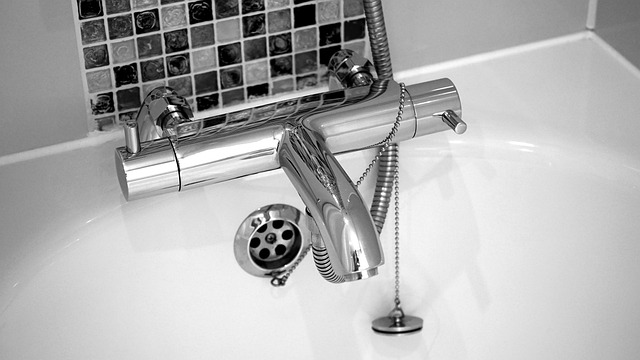Troubleshooting common bathroom plumbing issues like running toilets, clogged drains, leaks, low water pressure, and sink problems is essential for homeowners. Regular maintenance using natural remedies and quick action on red flags prevents damage and costs. From fixing a running toilet to unclogging drains and addressing shower head issues, DIY solutions and professional services are available. Winter insulation and frost protection ensure year-round functionality. Seeking expert help from licensed plumbers for complex problems guarantees efficient, long-lasting solutions.
Struggling with bathroom plumbing issues? This comprehensive guide tackles common problems from leaks and clogs to running toilets and water heater malfunctions. Learn to identify causes, find solutions, and perform DIY repairs for sinks, showers, and more. Discover expert tips for preventing pipe freezes and know when to call in professional help. Get equipped to handle any bathroom plumbing trouble with confidence.
Understanding Common Bathroom Plumbing Issues
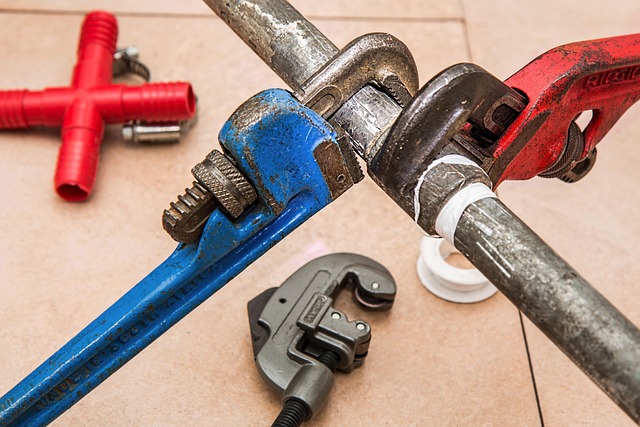
In the realm of bathroom plumbing, troubleshooting common issues can significantly enhance your comfort and save costs in the long run. One of the most frequent problems is a running toilet, where a faulty float or valve causes continuous water flow. This simple fix involves inspecting the tank for leaks and adjusting the float height to ensure proper water level control. Another prevalent issue is clogged drains, which can be addressed using drain cleaners, plungers, or natural remedies like baking soda and vinegar. These methods effectively clear blockages without calling a plumber immediately.
Understanding these basic plumbing problems and their causes empowers homeowners to tackle minor issues promptly. Additionally, keeping an eye on potential red flags such as leaks, strange noises, or low water pressure can help prevent more severe bathroom plumbing disasters. With some knowledge and the right tools, you can navigate many common bathroom plumbing challenges without excessive fuss, ensuring a smoother and more efficient space for daily routines.
Identifying Leaks: Causes and Solutions
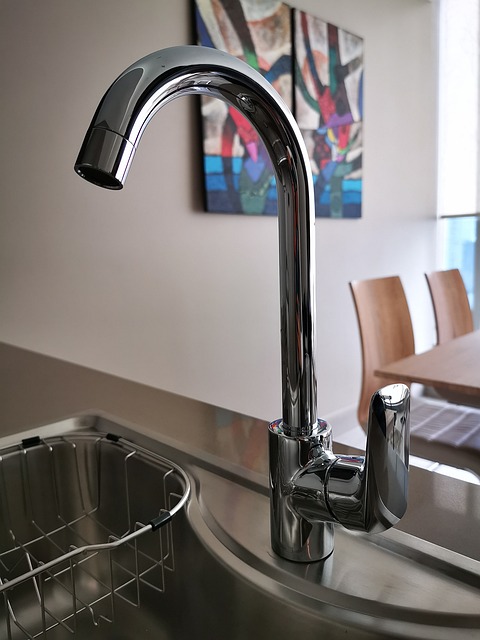
Leaky faucets or pipes are common bathroom plumbing issues that can waste a significant amount of water and lead to higher water bills. Identifying the source of a leak is crucial in fixing it promptly. Leaks often occur due to worn-out washers, damaged O-rings, or loose connections. For faucet leaks, checking the fixtures and replacing any worn parts can usually stop the leak. In more complex cases, such as pipe leaks, you might need to trace the affected area, which could be a result of rusted pipes, expanding pipes due to temperature changes, or faulty installations.
When addressing leaks, it’s essential to act quickly to prevent further damage and water wastage. Simple DIY solutions can fix minor leaks, but for more severe cases, professional bathroom plumbing services might be required. Regular maintenance and promptly fixing leaks can significantly extend the lifespan of your plumbing fixtures and reduce unnecessary expenses.
Unclogging Drains: A Step-by-Step Guide
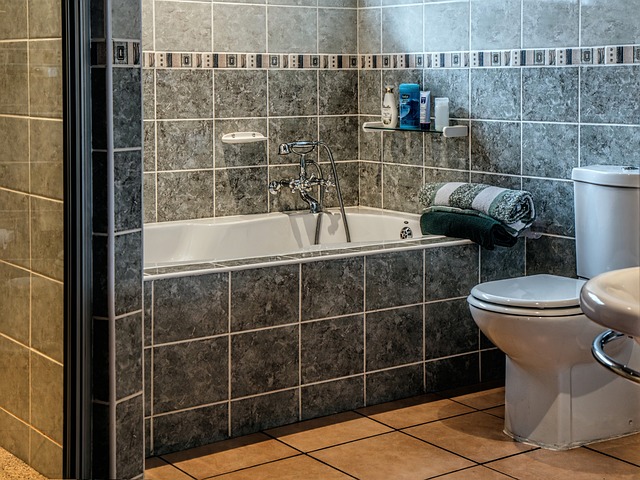
Unclogging drains in your bathroom is a common plumbing issue that can be easily addressed with the right tools and techniques. Before reaching for chemical drain cleaners, which can be harsh and potentially damaging to pipes, consider trying a simple, natural approach. Start by gathering a few household items like baking soda, vinegar, and a rubber glove. Pour 1/2 cup of baking soda down the drain followed by 1 cup of white vinegar. The mixture will fizz and bubble, helping to break up any buildup or clogs. After allowing it to sit for 30 minutes, use hot water to flush out the solution. If the clog persists, try using a plunger designed for sinks and drains.
For tougher clogs, repeat the baking soda and vinegar process multiple times or let the mixture work overnight. Always wear protective gloves when handling drain cleaners or chemicals. Remember, regular maintenance like clearing drains of hair, soap scum, and other debris can prevent serious bathroom plumbing issues from occurring in the first place.
Toilet Troubles: Fix a Running Toilet
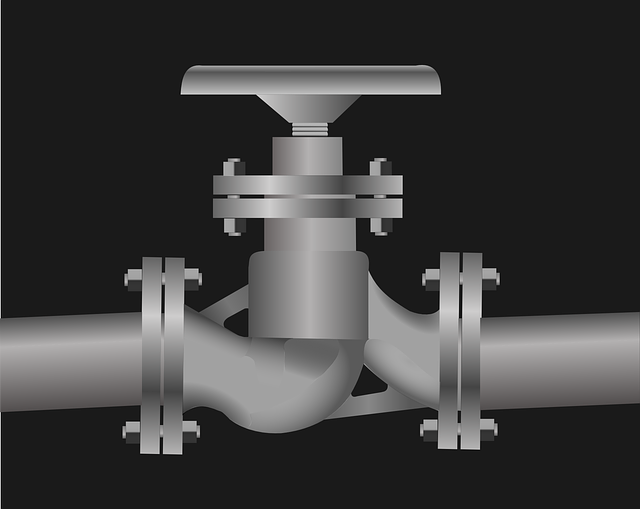
Toilet troubles can be common issues in any bathroom. One of the most frequent problems is a running toilet, which wastes water and increases your utility bills. If you notice continuous water flowing from the tank or the toilet keeps running after flushing, it’s time to address the issue.
The first step in fixing a running toilet is identifying the source of the problem. Check the flapper valve, which controls the water flow into the bowl. A worn-out or broken flapper can cause water to continuously fill the tank. Replace the flapper with a new one that fits your toilet model, and ensure it’s properly seated for effective sealing. Additionally, adjust the float arm to stop the water supply at the correct level, preventing overfilling and unnecessary water wastage. Proper maintenance and timely repairs are key to ensuring smooth bathroom plumbing operations.
Sink Problems: From Clogs to Water Pressure
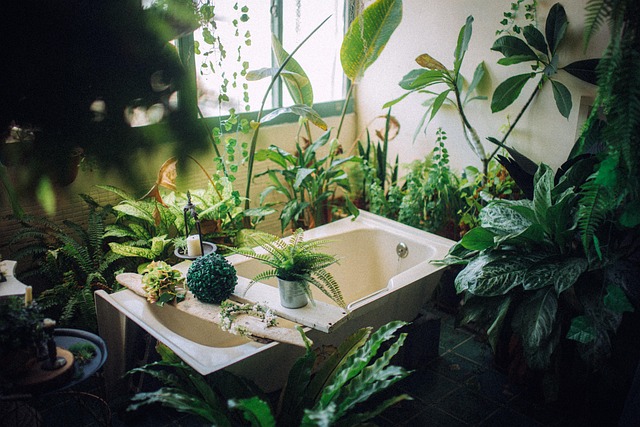
Sink problems are common bathroom plumbing issues that can range from minor inconveniences to more serious concerns. One of the most frequent issues is a clogged drain, which can be caused by various obstacles like hair, soap scum, or foreign objects. Over time, these clogs can lead to reduced water flow and even backups if not addressed promptly.
Another common sink problem is low water pressure. This issue often arises due to mineral buildup in the pipes, aerator issues, or faulty valves. Weak water pressure not only makes everyday tasks like brushing your teeth or washing your hands more difficult but can also indicate a larger plumbing problem beneath the surface. Addressing these sink problems early through simple troubleshooting techniques is key to maintaining healthy bathroom plumbing.
Shower Head Repairs and Upgrades
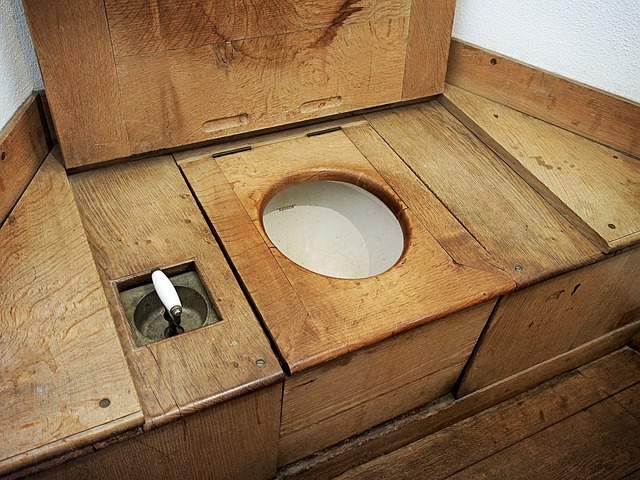
Shower heads are a common source of bathroom plumbing issues, often experiencing problems like low water pressure or leaks. Repairs for these can typically be handled with some simple tools and a bit of know-how. First, identify the type of shower head you have—mixing valves or pressure balance valves—as this will determine the repair method. For mixing valve issues, replacing the cartridge is usually effective in fixing leaks and adjusting water flow. Pressure balance valves, on the other hand, require a more advanced approach, often involving the replacement of the entire unit to resolve low pressure problems.
Upgrading your shower head can also be a great way to enhance your bathroom plumbing. Modern shower heads offer various features like adjustable settings for different spray patterns and water temperatures, as well as energy-efficient models that reduce water consumption without compromising performance. These upgrades not only improve your showering experience but also contribute to more sustainable bathroom practices, aligning with the broader trend of eco-friendly home improvements.
Water Heater Malfunctions: Troubleshooting Tips
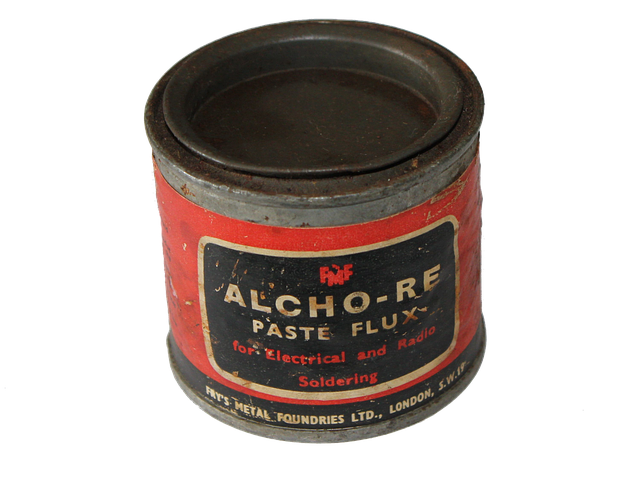
Water heater malfunctions are a common issue in bathroom plumbing, causing inconvenience and frustration. If your water heater is not heating water adequately or at all, don’t panic; there are several troubleshooting tips to help you get back to enjoying hot water. Start by checking the power supply; ensure the heater is plugged in and the circuit breaker hasn’t tripped. Test the temperature settings; sometimes, a simple adjustment can resolve the issue. If your water heater is gas-powered, verify that the pilot light is lit and functioning properly.
For electric heaters, inspect the heating element for any signs of damage or corrosion. In older models, a faulty thermostat could be to blame. Consider replacing the element or thermostat if they appear worn out. If these initial checks don’t resolve the problem, there might be an issue with the dip tube, which separates cold and hot water. Leaks or clogs in the pipes leading to the heater can also cause disruptions. In such cases, a thorough inspection of the plumbing connections is necessary to identify and fix any issues.
Pipe Freezing and Prevention Techniques
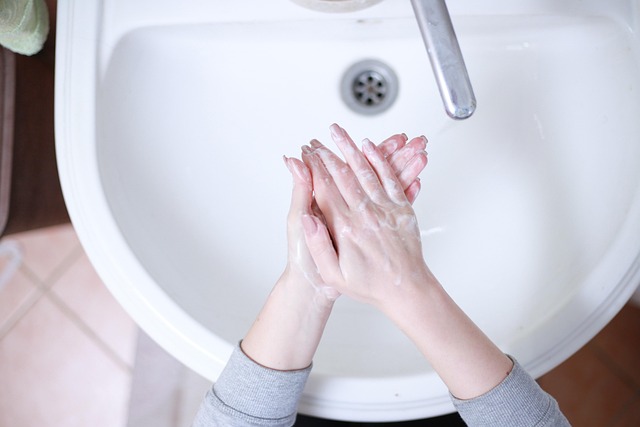
Winter can be a harsh season for bathroom plumbing, as freezing temperatures pose a significant risk to pipes. To prevent costly damage and disruptions in your home’s water supply, it’s crucial to implement effective pipe freezing techniques. Start by isolating vulnerable areas like exterior walls and pipelines exposed to cold air. Insulating these sections with materials like foam or heat tape creates a protective barrier against freezing. Another strategy is to use thermostatically controlled heating cables, which can be wrapped around pipes to maintain a consistent warm temperature. Regularly checking for any signs of water leaks and addressing them promptly is also vital; even minor leaks can lead to significant pipe damage in cold weather.
For added protection, consider installing a frost-free hydrant or anti-freeze solutions. These devices prevent the formation of ice by maintaining a constant flow of water within the pipes, ensuring your bathroom plumbing remains functional during winter. Regular maintenance and these preventive measures will go a long way in safeguarding your home’s plumbing system from freezing temperatures, keeping your bathroom accessible and your water supply running smoothly all year round.
When to Call in the Professionals
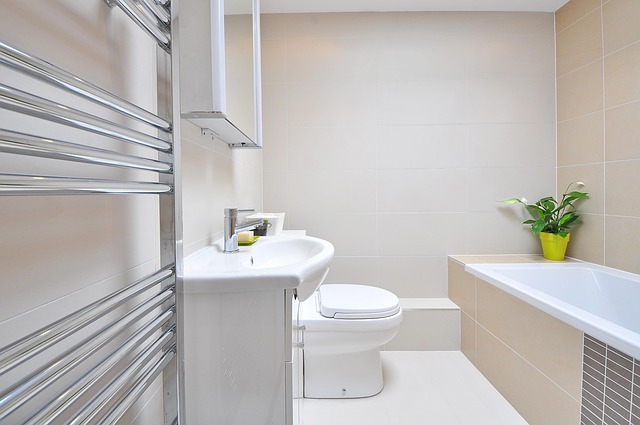
If you’re experiencing recurring issues with your bathroom plumbing, it might be time to consider professional help. While minor clogs, leaks, or low water pressure can often be addressed through simple troubleshooting techniques, persistent or complex problems warrant expert attention. Unfamiliar or intricate plumbing systems, for instance, could have unique challenges that require specialized knowledge and tools.
Calling in a licensed plumber ensures these issues are diagnosed accurately and resolved efficiently. They possess the expertise to navigate labyrinthine plumbing networks, identify root causes, and offer lasting solutions. Moreover, professionals can prevent further damage by using appropriate methods and materials, ensuring your bathroom plumbing functions optimally and securely.
